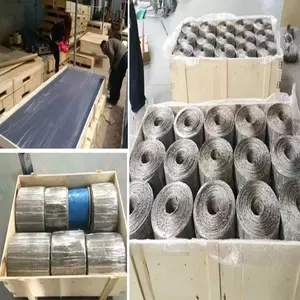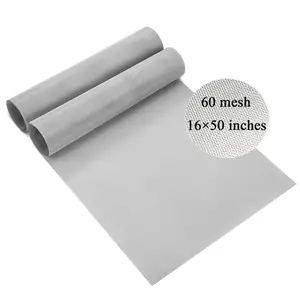Exploring the Versatility of Stainless Sieves
Stainless sieves are integral components in various industrial and domestic applications. Their primary function is to separate particles and materials of different sizes, a process essential in numerous sectors. This introduction delves into the diverse applications, construction, and advantages of stainless sieves, providing a comprehensive understanding of their significance.
Construction and Design of Stainless Sieves
Stainless steel mesh is the core material in the construction of stainless sieves, known for its durability and resistance to corrosion. The design of these sieves varies from fine to coarse meshes, catering to specific requirements. The mesh count and wire diameter are meticulously calibrated to ensure precise filtration and separation processes. The adaptability of stainless sieves allows for custom shapes and sizes, making them suitable for a range of purposes.
Applications in Various Industries
The application of stainless sieves extends beyond simple filtration tasks. In the food industry, sieves for baking are indispensable for sifting flour and other dry ingredients, ensuring a fine consistency. The chemical industry utilizes these sieves for particle size analysis, critical in quality control. Moreover, filtration equipment in water treatment plants often incorporates stainless sieves to remove contaminants effectively.
Features and Advantages
The inherent features of stainless sieves include their anti-corrosive properties and robustness, which contribute to their longevity. The ease of cleaning and maintenance is a significant advantage, ensuring hygienic operations, particularly in the food and pharmaceutical sectors. Additionally, the environmental resistance of stainless sieves makes them ideal for outdoor applications, such as in agricultural fencing or as protective barriers in various settings.
Materials and Sustainability
Stainless steel, the primary material in stainless sieves, is lauded for its sustainability. Being recyclable, it aligns with eco-friendly practices and supports industries in reducing their environmental footprint. The material's strength-to-weight advantage also means that less steel is required to achieve the same level of functionality as other metals, further enhancing its sustainable appeal.
Choosing the Right Stainless Sieve
Selecting the appropriate stainless steel wire mesh for a specific task is crucial. Factors such as mesh size, wire diameter, and the type of stainless steel (e.g., austenitic or ferritic) play a pivotal role in the sieve's performance. While Alibaba.com does not endorse any particular product, the platform facilitates the connection between buyers and a diverse array of suppliers, ensuring a wide selection of stainless sieves to meet various operational demands.

































 浙公网安备 33010002000092号
浙公网安备 33010002000092号 浙B2-20120091-4
浙B2-20120091-4